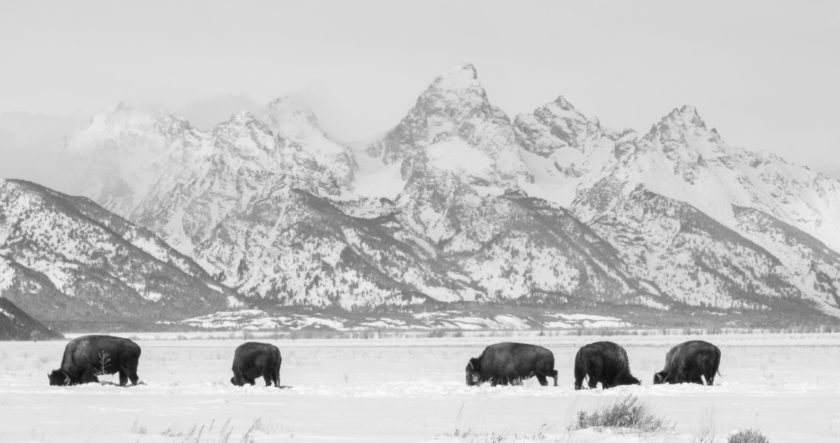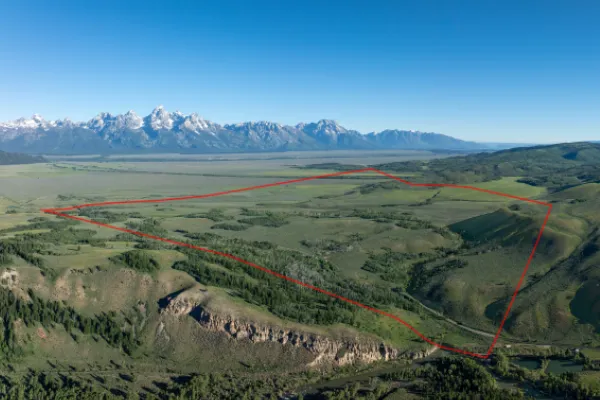
Bison foraging in deep snow near the town of Kelly in Grand Teton National Park. Photo by Ryan Sheets.
A continuous series of storms during the first two weeks of January dropped more than ten feet of snow on the high peaks of the Tetons. With such a deep snowpack, Grand Teton’s animals are putting their winter survival adaptations to the test.
• Despite the warm and dry start to the winter in November, snow totals have crested 100% of average in the New Year.
• Hibernating animals, such as black and grizzly bears, benefit from a deeper
snowpack, which provides better insulation.
• Bison use their massive heads, thick skin, and muscular necks to move snow
from side to side, creating craters where they can access buried forage.
• As days gradually lengthen, ravens, bald eagles, and great horned owls—some
of the area's earliest nesters—begin courtship activities.
• Wolverines, Canada lynx, and wolves remain highly active, using large, snow-
adapted feet to move through the environment.
• As snow depths increase, moose use their long legs to move through deep
snow to areas of preferred forage. Moose calves remain with their mothers
through the winter and follow closely behind as mom breaks trail through the
snow. Moose also use their highly developed sense of smell to find only the most
nutritious parts of shrubs under the snow.
• Like the mother moose and her offspring, wolves also travel in single file lines
through deep snow for efficiency.
• Moose have begun congregating in areas where bitterbrush is abundant, such
as the sagebrush flats near the Jackson Hole Airport and north of the town of
Kelly.
• The American dipper, also known as the water ouzel, remains highly active all
winter, seeking areas of open, moving water where they bob on rocks between
dives for aquatic insects.
• Our cold water fish are supremely adapted to surviving winter, often under the
ice for months at a time. Nevertheless, like other wildlife, winter is stressful for
fish. Sport fishing opportunities in the park are limited during winter to help
reduce undue stress on fish.
Please consider the space and energy conservation needs of wildlife
during winter and do not approach them closely, even though they may
appear unconcerned. In many cases, they simply have nowhere else to go
until snow depths decrease.










